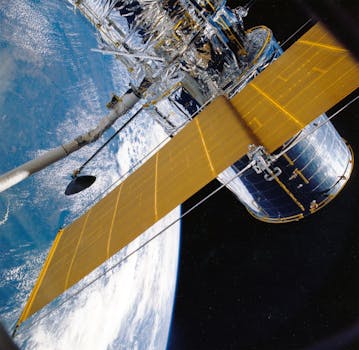Satellite Telecommunications 2023: What’s New and What’s Next? – Satellite Telecommunications

Satellite Telecommunications 2023: What’s New and What’s Next? – Satellite Telecommunications
Satellite Telecommunications has revolutionized the way we communicate, and 2023 is no exception. With the increasing demand for global connectivity, satellite telecommunications has become a vital component of modern communication systems. In this article, we will explore the latest advancements in satellite telecommunications and what the future holds for this rapidly evolving field.
The satellite telecommunications industry has experienced significant growth in recent years, driven by advancements in technology and the increasing need for global connectivity. The development of new satellite constellations, such as OneWeb and Starlink, has expanded the reach of satellite telecommunications, providing high-speed internet access to remote and underserved areas. Additionally, the use of satellite telecommunications in the Internet of Things (IoT) and 5G networks has further increased the demand for satellite-based services.
Advancements in Satellite Technology
Several advancements in satellite technology have contributed to the growth of the satellite telecommunications industry. One of the most significant developments is the use of High-Throughput Satellites (HTS), which offer higher bandwidth and faster data transfer rates than traditional satellites. HTS has enabled the provision of high-speed internet services, including broadband and mobile networks, to a wider range of users. Another important development is the use of phased array antennas, which allow for more efficient and flexible use of satellite bandwidth.
The adoption of satellite-based services in the IoT and 5G networks has also driven the growth of the satellite telecommunications industry. Satellite-based services, such as satellite-based IoT connectivity and 5G backhaul, have enabled the provision of low-latency and high-bandwidth connectivity to a wide range of devices and applications. Furthermore, the use of satellite telecommunications in the development of smart cities and intelligent transportation systems has further increased the demand for satellite-based services.
What’s Next for Satellite Telecommunications?
As the satellite telecommunications industry continues to evolve, several trends and developments are expected to shape its future. One of the most significant trends is the increasing use of Low Earth Orbit (LEO) satellites, which offer lower latency and higher bandwidth than traditional satellites. LEO satellites are expected to play a key role in the development of 5G and 6G networks, as well as in the provision of satellite-based IoT connectivity.
Another important trend is the adoption of quantum encryption and other advanced security technologies in satellite telecommunications. As the use of satellite-based services increases, the need for secure and reliable communication systems has become more pressing. The adoption of quantum encryption and other advanced security technologies is expected to provide an additional layer of security and protection for satellite-based communication systems.
The development of new satellite constellations, such as Amazon’s Kuiper Systems and Microsoft’s Azure Orbital, is also expected to shape the future of satellite telecommunications. These constellations will provide high-speed internet access and other satellite-based services to a wide range of users, including consumers, businesses, and governments.
Conclusion
In conclusion, the satellite telecommunications industry has experienced significant growth in recent years, driven by advancements in technology and the increasing need for global connectivity. As the industry continues to evolve, several trends and developments are expected to shape its future, including the increasing use of LEO satellites, the adoption of quantum encryption and other advanced security technologies, and the development of new satellite constellations. With its ability to provide high-speed internet access and other satellite-based services to a wide range of users, satellite telecommunications is expected to play a vital role in the development of modern communication systems.




